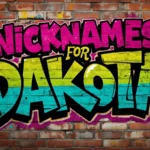Why Colors Control Your Wallet
Have you ever walked into a store, loved the “vibe,” and ended up buying more than you planned?
That wasn’t an accident.
Colors play a powerful role in shaping how we feel and what we do. In fact, studies show that up to 90% of first impressions are based on color alone. Marketers and big brands know this, and they use it to guide your decisions—especially when it comes to spending.
This blog will reveal the hidden branding secrets behind colors, how they influence your shopping behavior, and how you can use this knowledge in your own life or business.
What Is Color Psychology in Branding?
Color psychology is the study of how different colors affect human emotions and actions. In branding and marketing, it’s used to:
- Attract attention
- Build trust
- Trigger emotions
- Encourage purchases
When you see the bright red of Coca-Cola or the calming blue of Facebook, it’s not random—it’s carefully chosen.
👉 The keyword here: colors that make you spend more are not just pretty—they’re profit-driven.
Why Colors Matter in Business
Brands don’t spend millions on design just for looks. They know:
- Colors drive emotions. Emotions drive decisions.
- Consistent color use increases brand recognition by 80%.
- Shoppers make subconscious judgments about a product within 90 seconds—and 62–90% of that is based on color.
Think of Target’s red, McDonald’s yellow, or Apple’s sleek white. Each color tells a story and makes you feel a certain way before you even notice it.
The Psychology of Key Colors in Branding
Here’s a breakdown of the most powerful colors that influence spending:
🔴 Red: Urgency & Excitement
- Used by: Target, Coca-Cola, Netflix
- Effect: Creates urgency, raises energy, and makes people act fast.
- Why it works: Perfect for clearance sales, fast food, and impulse buys.
🟡 Yellow: Optimism & Attention
- Used by: McDonald’s, Best Buy, Snapchat
- Effect: Evokes happiness and grabs attention.
- Why it works: Stimulates quick decisions and creates a cheerful vibe.
🔵 Blue: Trust & Security
- Used by: Facebook, PayPal, American Express
- Effect: Builds trust and a sense of safety.
- Why it works: Makes people feel comfortable spending money, especially in finance and tech.
🟢 Green: Wealth & Health
- Used by: Whole Foods, Starbucks, Spotify
- Effect: Represents balance, growth, and money.
- Why it works: Encourages spending in eco-friendly, wellness, and financial spaces.
🟣 Purple: Luxury & Creativity
- Used by: Cadbury, Hallmark, Twitch
- Effect: Associated with royalty, exclusivity, and imagination.
- Why it works: Ideal for premium pricing and luxury branding.
⚫ Black: Power & Sophistication
- Used by: Nike, Apple, Chanel
- Effect: Signals elegance and authority.
- Why it works: Encourages high-end purchases and makes products look premium.
⚪ White: Simplicity & Cleanliness
- Used by: Apple, Adidas, Uniqlo
- Effect: Minimalist and fresh.
- Why it works: Appeals to modern buyers who like clarity and sleek design.
How Brands Use Color to Make You Spend More
1. Logos and Packaging
Colors in logos and product packaging create instant connections.
- Red bags = urgency to buy now
- Green packaging = eco-friendly and safe choice
- Gold = premium and worth extra money
2. Store Layouts and Decor
- Fast food chains use red and yellow to make you eat quickly and order more.
- Luxury stores like Gucci or Prada use black and gold for exclusivity.
3. Sales and Discounts
- Clearance signs are usually red—because it screams “act fast!”
- “New arrivals” often use green or blue to signal freshness and trust.
4. Websites and Apps
- Online buttons (“Buy Now” or “Subscribe”) are often bright red, orange, or green.
- Finance apps use blue to feel safe.
Actionable Tips: How You Can Use Color Psychology
For Shoppers (Protect Yourself):
- Be aware: if everything is red, the store wants you to act fast. Pause before you buy.
- Don’t confuse happiness with spending—yellow makes you feel good, but don’t overspend.
- Luxury colors (black, gold, purple) can trick you into thinking something is more valuable.
For Entrepreneurs & Businesses (Boost Your Brand):
- Pick 1–2 primary colors that match your brand message.
- Use red or orange for call-to-action buttons online.
- If you’re in finance, health, or tech, choose blue or green for trust.
- For luxury or creative industries, add purple, gold, or black.
The Hidden Science Behind Your Spending Habits
Marketers know that:
- Warm colors (red, orange, yellow) = urgency, action, impulse buys.
- Cool colors (blue, green, purple) = calm, trust, and long-term loyalty.
Your brain reacts to color before logic kicks in. That’s why you “feel” good about a purchase before you even know why.
Real-Life Examples: The Power of Colors
- McDonald’s: Red + Yellow = hungry, happy, and fast. Perfect for quick dining.
- Starbucks: Green = balance, relaxation, and community.
- Apple: White + Black = luxury, simplicity, and premium pricing.
- Amazon: Orange “Buy Now” button = action-driven purchase.
Each example shows how colors that make you spend more are carefully selected—not random.
The Connection Between Color and Online Shopping
Online, colors matter even more because you can’t touch or test products.
- 85% of shoppers say color is the main reason they buy a product.
- Changing a button color (like from blue to red) can increase sales by 20–30%.
- Brands test different color palettes (A/B testing) to see which drives more clicks.
👉 Next time you shop online, notice the color of “Add to Cart.” That’s no accident.
Breaking Down Color and Gender
Research shows men and women react differently to colors:
- Men prefer bold colors like black, blue, and red.
- Women lean toward softer shades like purple, pink, and green.
- Smart brands balance these differences depending on their audience.
How to Choose the Right Colors for Your Brand (Step by Step)
- Know Your Audience – Are they budget buyers, luxury seekers, or health-conscious?
- Define Your Message – Trustworthy, exciting, premium, or fun?
- Match Emotion to Color –
- Trust = Blue
- Urgency = Red
- Wellness = Green
- Luxury = Black/Purple
- Be Consistent – Use the same palette across logo, website, ads, and packaging.
- Test and Adjust – Run A/B tests on color buttons, backgrounds, or packaging.
The Dark Side of Color Psychology
While powerful, color tricks can also manipulate consumers.
- Bright clearance signs push impulse spending.
- Luxury colors pressure you into overpaying.
- Color-based “false urgency” (like countdown timers in red) can make you buy faster.
👉 Awareness is power. Once you notice the trick, you can make smarter choices.
Final Thoughts: See the Colors, Control Your Spending
Colors are more than decoration—they’re silent persuaders. From your favorite coffee shop to your online shopping cart, they’re shaping your choices every day.
By understanding the colors that make you spend more, you gain power:
- As a shopper, you can resist unnecessary spending.
- As a business owner, you can use colors to build trust, attract customers, and boost sales.
Next time you grab that red sale item or trust a blue banking app, remember—it’s not just luck. It’s color psychology at work.


